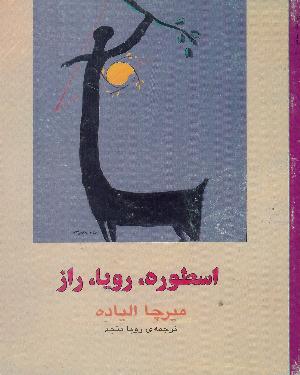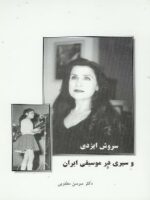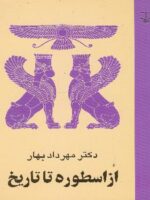اسطوره، رویا، راز
میرچا الیاده دین شناس امریکایی اسطوره را چنین تعریف میکند: « اسطوره نقل کننده ی سرگذشت قدسی و مینوی است، راوی واقعه ایست که در زمان نخستین، زمان شگرف بدایت همه چیز رخ داده است. به بیان دیگر: اسطوره حکایت میکند که چگونه به برکت کارهای نمایان و برجسته ی موجودات فراطبیعی، واقعیتی، چه کل واقعیت ، یا تنها جزیی از آن پا به عرصه ی وجود نهاده است. بنابراین، اسطوره همیشه متضمن روایت یک خلقت است، یعنی میگوید چگ.نه چیزی پدید آمده و هستی خود را آغاز کرده است. اسطوره فقط از چیزی که براستی روی داده و به تمامی پدیدار گشته، سخن میگوید. شخصیتهای اسطوره موجودات فراطبیعی اند و تنها بدلیل کارهایی که در زمان سرآغاز همه چیز انجام داده اند، شهرت دارند. اساطیر کار خلاق آنان را باز مینمایانند و قداست یا فراطبیعی بودن اعمالشان را عیان میسازند». در مقابل هستند عده دیگری که به اسطوره صرفا از سر انکار می نگرند. این گروه اسطوره را یکی از الگوهای تاریخی یا سازواره ای کهنه و از کار افتاده میبینند که بیشرفت بشر آنرا از رده خارج کرده است.
Eliade`s major theoretical and scholarly works in the 1940s and 1950s include TRAITE D`HISTOIRE DES RELIGIONS (1949, Patterns of Comparative Religion), Le mythe de l`éternel retrour, and MYTHES, RÉVES ET MYSTÈRES (1957, Myths, Dreams, and Mysteries ). HISTOIRE DES CROYANCES ET DES IDÉES RELIGIEUSES (3 vols. 1976-1983, A History of Religious Ideas) has been called the synthesis of Eliade`s work as a scholar. `The breadth and depth of Eliade`s learning,` wrote Roger Corless, `which astonished all who met him, his reverence toward the tradition he studied, and his intense, infectious enthusiasm, were an assurance that, if anyone could find what was religious about religion(s), he could. I believe the record shows that he could not. As a result, we now know a great deal more about religion(s) and we can ask totally new questions about it/them.` (`Building on Eliade`s Magnificent Failure, in Changing Religious Worlds: The Meaning and End of Mircea Eliade, ed. by Bryan S. Rennie, 2000). In 1956 Eliade joined the faculty of the University of Chicago. Eliade remained in the United States until his death on April 23, 1986. Five years later the Divinity School of the University of Chicago became, dramatically, the scene of Ioan Culianu`s death. Culianu – the professor of the history of religion, Eliade`s professional heir – was killed in the restroom. He suspected that – allegedly – Eliade had been associated with the Iron Guard. After Eliade`s death he started to develop his own theory of history. (see Eros, Magic, and the Murder of Professor Culianu by Ted Anton, 1997) A central theme in Eliade`s works was that the archaic religions made sacred the world in a fashion no longer available. Through the understanding of the relationship between the sacred and the profane it is possible to begin to understand the world of the past. Eliade`s creative hermeneutics has received considerable criticism, and it has been said that his `main position is shrouded in ambiguities`. Claude-Henri Rocquet has suggested the reader of Eliade is involved in `a hermeneutics without end, since even as we read Eliade, we are interpreting him, just as he is interpreting some Iranian symbol`. Eliade was a Christian and Jungian – he met Carl Jung for the first time in 1950, and two years later he interviewed Jung at the Eranos Conference. `The modern world is desacralized,` Jung said in the interview, `that is why it is in a crisis. Modern man must rediscover a deeper source of his own spiritual life.` Also Eliade`s works, such as Myths, Dreams and Mysteries, and ASPECTS DU MYTHE (1963, Myth and Reality), stressed the relevance of ancient religions for contemporary man. However, Jung insisted that the images of archaic man are much closer to the European and American psyche than Eliade admitted. Eliade later stopped using the term `archetype`, which is familiar from Jung`s works, in order to avoid Jungian and other misinterpretations




